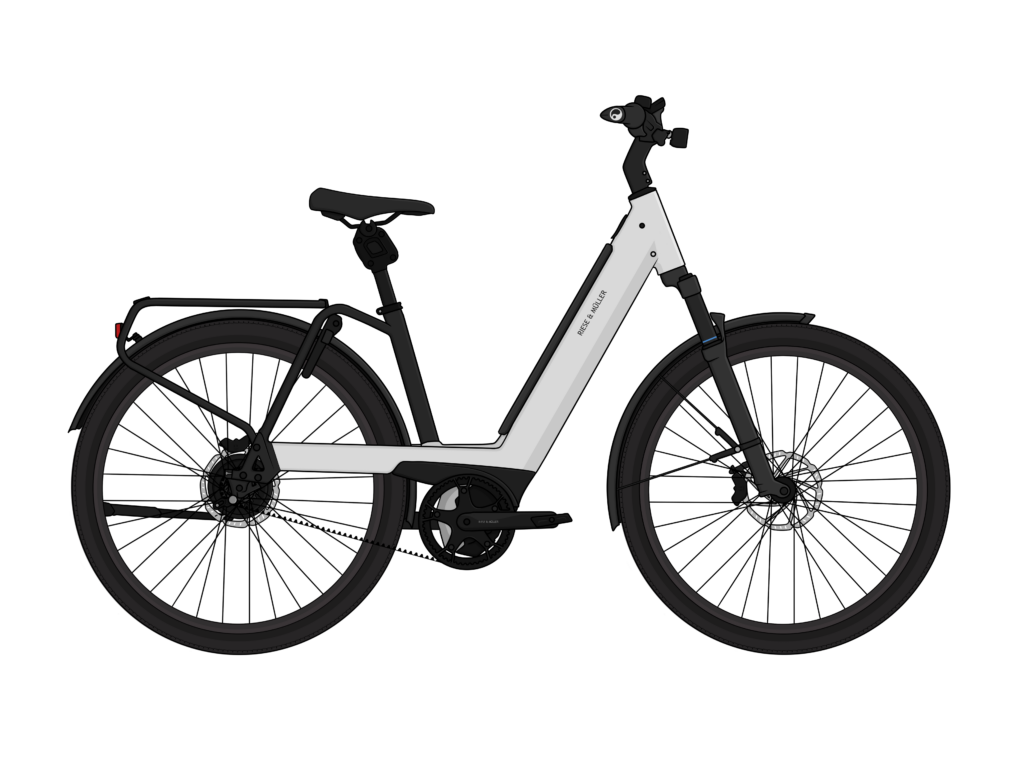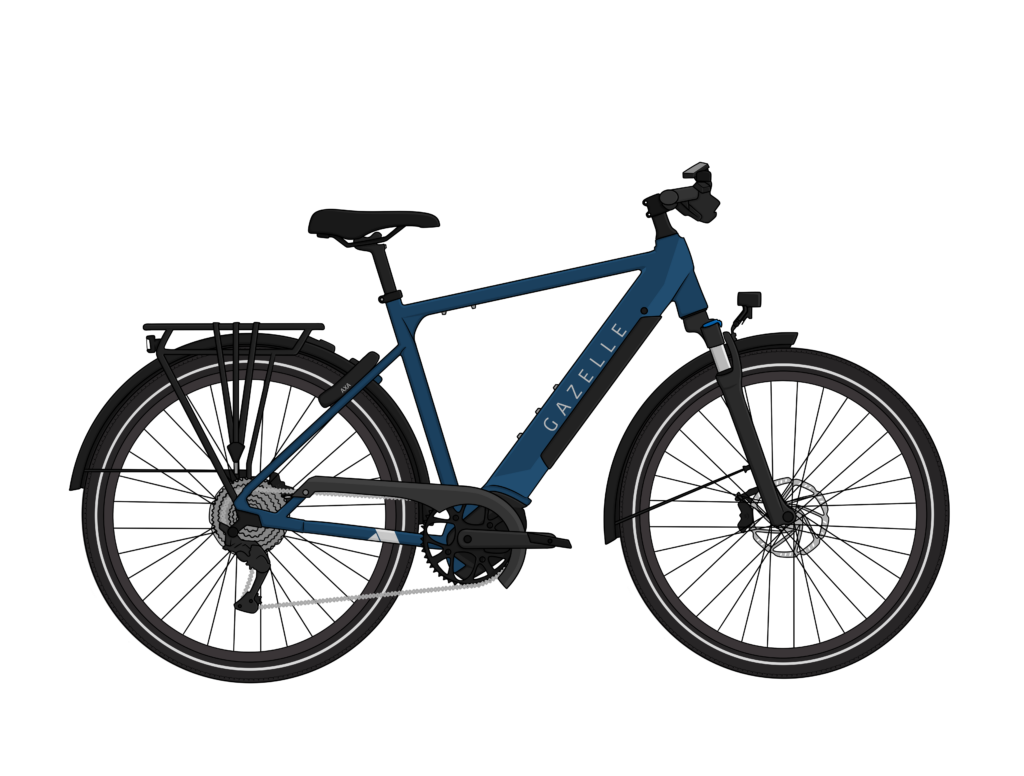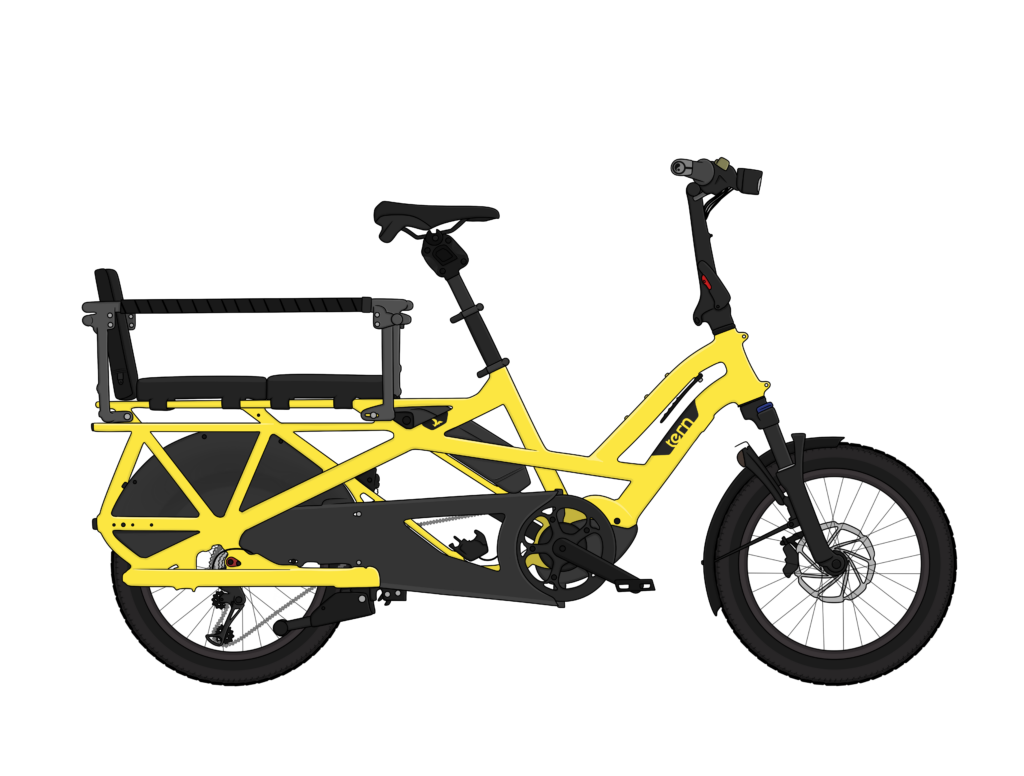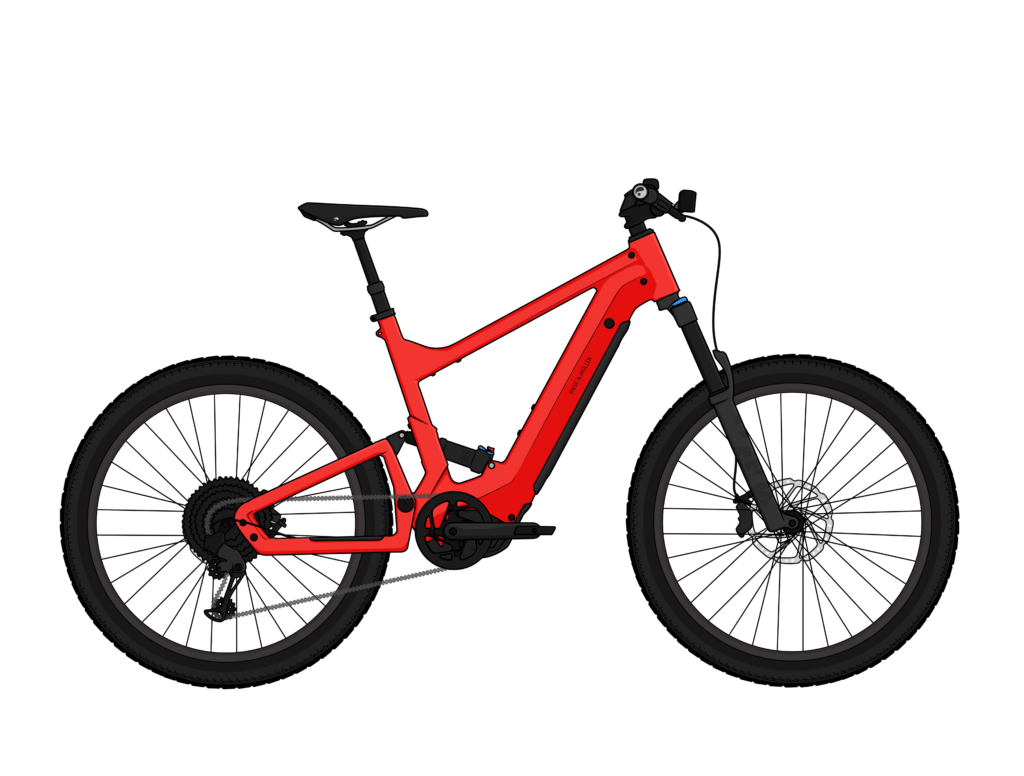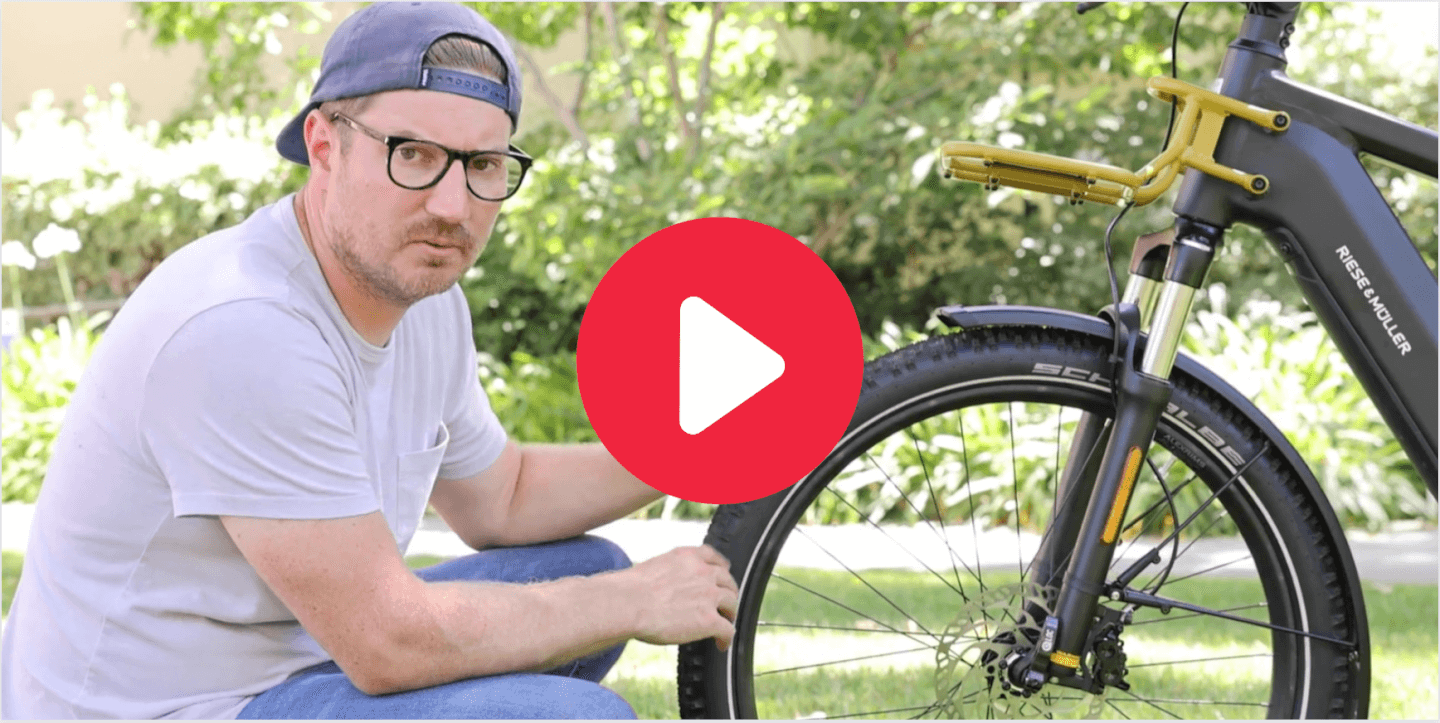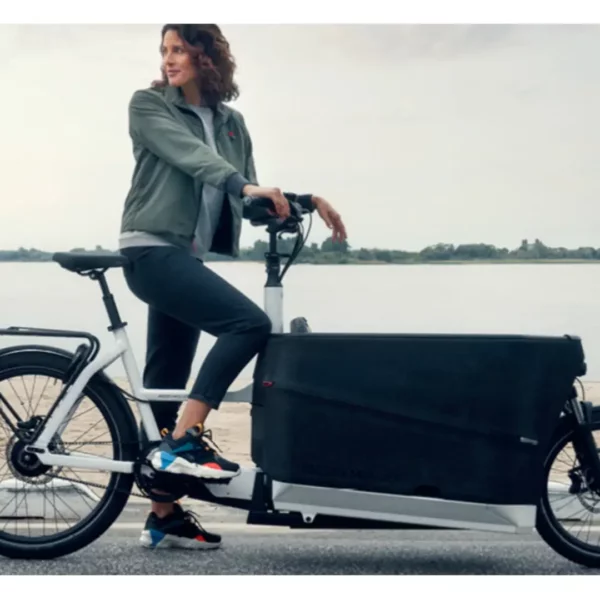eBike Suspension & Why it Matters
Suspension can be a great feature to have on an eBike, as it helps to absorb some of the bumps and shocks you may experience while riding.
Suspension can make your ride more comfortable, help to reduce fatigue, and provide a smoother ride overall. Additionally, having suspension can help to reduce the risk of injury in the event of a fall or crash. It’s important to be aware, though, that suspension can also add weight and complexity to your bike, and may require additional maintenance. If you’re looking for a smoother ride, suspension may be worth considering, but it’s important to weigh the pros and cons for your particular situation.
Most eBikes we offer have some suspension elements, a front suspension fork, wider tires, suspension seatpost and in some cases rear suspension. Riese & Muller offers full suspension on many of their models and they call it control technology as it helps you maintain control of the bike. This is usually designated for just mountain bikes, but it can be very helpful for eBikes even if just ridden casually.
Illustration of how suspension changes the rider experience
Below is an illustration from Riese & Muller showcasing the differences between front suspension and bikes with full suspension, you can see how it isolates the rider from the rough terrain.

Suspension or no-suspension? The benefits.
With Suspension:
Comfort: Suspension helps to absorb shocks and vibrations from the terrain, providing a smoother and more comfortable ride.
Control: Suspension enhances the handling and stability of the ebike, allowing the rider to maintain control even on rough terrain.
Safety: Suspension reduces the risk of injury by reducing the impact of shocks and vibrations on the rider’s body while keeping the tires in consistent contact with the ground improving tracking and braking.
Efficiency: Suspension can help to conserve the energy of the rider by reducing fatigue, allowing them to cover longer distances with less effort.
Without Suspension:
Simplicity: eBbikes without suspension are simpler in design and construction, making them easier to maintain and less prone to failure.
Weight: eBikes without suspension are generally lighter, as they don’t have the added weight of suspension components.
Cost: eBikes without suspension are often more affordable, as they are simpler and less expensive to manufacture.
Speed: eBikes without suspension can be faster and more efficient on smooth terrain, as they don’t have the added weight or power loss of suspension components.
The choice between an ebike with suspension or without suspension ultimately depends on the rider’s preferences and the type of riding they will be doing. Suspension can provide a smoother and more comfortable ride, but it can also add weight, complexity, and cost to the eBike.
What is the distinction? Coil and Air suspension.
The difference between coil and air suspension on eBikes is mainly how the suspension is constructed and how it works.
Coil suspension uses a spring made of steel or other metal to absorb shocks and vibrations. The spring can be adjusted to increase or decrease its stiffness, depending on the rider’s preferences and the type of terrain being ridden on. Coil suspension is often heavier than air suspension, but it is also more durable and less prone to failure. This is a common choice for commuter bikes due to the low maintenance and durability.
Air suspension, on the other hand, uses a sealed air chamber instead of a spring to absorb shocks and vibrations. The air pressure can be adjusted to vary the stiffness of the suspension, and it is generally lighter and more easily adjustable than coil suspension. However, air suspension can be more complex and less durable than coil suspension, as it relies on air seals and a pump to maintain proper air pressure. Often chosen for more performance oriented eBikes.
In summary, both air and coil suspension have their own advantages and disadvantages, and the choice between the two depends on the rider’s preferences and the type of riding they will be doing.
‘Suspension Travel’ – Why does it matter?
The term “suspension travel” refers to the amount of vertical movement or distance that a suspension system can move or compress. In other words, it’s the maximum distance the suspension can absorb a bump or impact, before reaching its limit and bottoming out. It is used because the suspension system travels a certain distance to absorb shocks and vibrations from the terrain, providing a smoother and more comfortable ride.
The suspension travel can vary depending on the type of suspension, and can range from 50mm to 200mm or more for ebike suspension. Most urban eBikes have 100mm and below suspension as the longer travel is usually reserved for mountain biking.
The suspension travel is important in the context of ebike suspension, as it determines how much the suspension can absorb impacts and how much the rider will feel bumps on the trail. Riders can choose an ebike with a certain amount of suspension travel to match their riding style and the type of terrain they will be riding on.
No Suspension – what are your alternatives?
Wide tires, suspension seatposts and stems are nice alternatives or additions to an ebike with suspension.
Suspension Seatpost
A suspension seatpost is a device that is installed on the seatpost of a bike, and it provides a small amount of vertical travel to absorb shocks and vibrations. This can help to provide a smoother and more comfortable ride, especially for short rides on relatively smooth terrain.
Suspension Stem
A suspension stem provides a small amount of vertical travel to absorb shocks and vibrations. This can help to reduce the impact of bumps and vibrations on the hands, wrists, and arms, which can reduce fatigue and increase comfort on longer rides.
Wide Tires
Wide tires can also provide a great suspension element to an ebike, as they can absorb more of the bumps and dips in the road. They can also provide more stability and traction when riding – a great choice for ebikers looking for a smoother and more comfortable ride.
Wide tires, suspension seatposts and stems can provide some of the benefits of suspension without the added weight, complexity, and cost of a full suspension system. They are ideal for riders who are looking for a compromise between comfort and efficiency, and they can be especially useful for riders who do a mix of road and off-road riding

